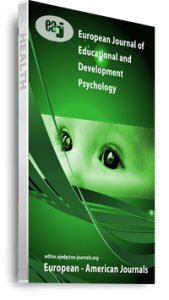Face-to-face interactions are organized in a clear rhythmic structure. This study examined how the rhythmic patterns of behaviors during mother-child interactions differentiate children with Autism Spectrum Disorder (ASD) from Typically Developing (TD) children. Ten children with ASD and ten TD children, matched for mental age, were videotaped in naturalistic play sessions with their mothers. The microanalytic approach applied, focused on a qualitative axis (type of behavior), and a quantitative axis (duration of behaviors). Results demonstrated that children with ASD rarely initiate an episode of interaction with their mother, prefer solitary play and use less communicative behaviors. Overall, they exhibit an atypical rhythmic patter of interaction, which is interpreted by their deficient motive for intersubjective communication.
Keywords: Rhythm, autism spectrum disorder, intersubjectivity, microanalysis, mother-child interaction

